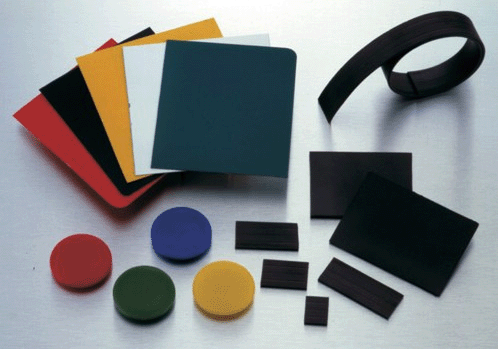News & Events
How was the magnet found?
Posted on Oct. 7, 2012
About 4,000 years ago, dug up the earth to find Magnes lodestones. Lodestones contain magnetite, a natural magnetic of Fe3O4. This type of rock was subsequently named magnetite.
From the historical point of view the development of permanent magnet materials, the late nineteenth century the use of carbon steel, energy product (BH) max (stored magnetic energy density of the permanent magnet to measure the physical quantity) less than 1MGOe (MB high Austria), and the current foreign production of Nd-Fe-B permanent magnet materials, energy product has reached 50MGOe more. This is a century, the material is very small remanence Br increase can be attributed to increased accumulation of coercive force Hc of the increase. The coercivity increase, mainly due to their understanding of the nature and compounds of high magnetic anisotropy found, and the preparation technology. The early twentieth century, people mainly use carbon steel, tungsten steel, chrome steel and cobalt steel for permanent magnet materials. Late 1930s, AlNiCo permanent magnet materials developed before large-scale application of the permanent magnet materials possible. The fifties, the emergence of barium ferrite, not only reduces the cost of permanent magnets, permanent magnet materials in turn broaden the scope of application to high-frequency field. To the sixties, the emergence of rare-earth cobalt permanent magnet, the magnet was applied to open a new era. In 1967, the United States Dayton University Strnat etc., were successfully bonded with a powder made of SmCo5 permanent magnets, rare earth permanent magnet marks the era. So far, dilute ten permanent magnet has gone through the first generation of SmCo5, the second generation of precipitation hardening Sm2Co17, developed to the third generation ofNd-Fe-B permanent magnet materials. In addition, in the history of permanent magnet materials have been used as a Cu-Ni-Fe, Fe-Co-Mo, Fe-Co-V, MnBi, A1MnC alloys. As the performance of these alloys is not high, not low cost, in most cases have been rarely used. The AlNiCo, FeCrCo, PtCo alloy in some special occasions also be applied. Currently Ba, Sr ferrite is still the greatest amount of permanent magnet materials, but many of its applications are gradually being Nd-Fe-B type of material to replace. Also, the current output of rare earth permanent magnet materials have been much higher than ferrite magnets, rare earth permanent magnet material production has developed into a major industry

